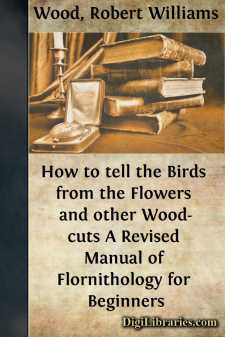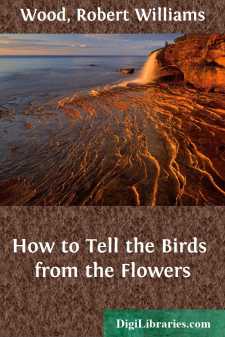Categories
- Antiques & Collectibles 13
- Architecture 36
- Art 48
- Bibles 22
- Biography & Autobiography 813
- Body, Mind & Spirit 142
- Business & Economics 28
- Children's Books 17
- Children's Fiction 14
- Computers 4
- Cooking 94
- Crafts & Hobbies 4
- Drama 346
- Education 46
- Family & Relationships 57
- Fiction 11829
- Games 19
- Gardening 17
- Health & Fitness 34
- History 1377
- House & Home 1
- Humor 147
- Juvenile Fiction 1873
- Juvenile Nonfiction 202
- Language Arts & Disciplines 88
- Law 16
- Literary Collections 686
- Literary Criticism 179
- Mathematics 13
- Medical 41
- Music 40
- Nature 179
- Non-Classifiable 1768
- Performing Arts 7
- Periodicals 1453
- Philosophy 64
- Photography 2
- Poetry 896
- Political Science 203
- Psychology 42
- Reference 154
- Religion 513
- Science 126
- Self-Help 84
- Social Science 81
- Sports & Recreation 34
- Study Aids 3
- Technology & Engineering 59
- Transportation 23
- Travel 463
- True Crime 29
How to tell the Birds from the Flowers and other Wood-cuts A Revised Manual of Flornithology for Beginners
Description:
Excerpt
By other Nature books I'm sure,
You've often been misled,
You've tried a wall-flower to secure.
And "picked a hen" instead:
You've wondered what the egg-plants lay,
And why the chestnut's burred,
And if the hop-vine hops away,
It's perfectly absurd.
I hence submit for your inspection,
This very new and choice collection,
Of flowers on Storks, and Phlox of birds,
With some explanatory words.
Not every one is always able
To recognize a vegetable,
For some are guided by tradition,
While others use their intuition,
And even I make no pretense
Of having more than common sense.
Indeed these strange homologies
Are in most flornithologies,
And I have freely drawn upon
The works of Gray and Audubon,
Avoiding though the frequent blunders
Of those who study Nature's wonders.
Burr. Bird.
Who is there who has never heard,
About the Burdock and the Bird?
And yet how very very few,
Discriminate between the two,
While even Mr. Burbank can't,
Transform a Bird into a Plant.
Some are unable, as you know,
To tell the Crocus from the Crow;
The reason why is just be-caws
They are not versed in Nature's laws.
The noisy cawing Crows all come,
Obedient to the Cro'custom,
A large Crow Caw-cus to convoke.
You never hear the Crocus croak!
The Clover. The Plover.
The Plover and the Clover can be told apart with ease,
By paying close attention to the habits of the Bees,
For En-to-molo-gists aver, the Bee can be in Clover,
While Ety-molo-gists concur, there is no B in Plover.
The Gander loves to promenade,
Around the farmer's poultry yard,
While as we see, the Oleander
Is quite unable to meander:
The Gardener tied it up indeed,
Fearing that it might run to seed.
The Hen. The Lichen.
Lichens, regardless of conventions,
Exist in only two dimensions,
A life restricted to a plane,
On rocks and stones a greenish stain,
They live upon the simplest fare,
A drop of dew, a breath of air.
Contrast them with the greedy Hen,
And her most careless regimen,
She shuns the barren stones and rocks,
And thrives upon the garbage box.
The Panicle and Pelican have often been confused,
The letters which spell Pelican, in Panicle are used.
If you recognize this Anagram you'll never go astray,
Or make the careless blunder that was made by Mr. Gray.
The Pea. The Pewee.
To tell the Pewee from the Pea,
Requires great per-spi-ca-city.
Here in the pod we see the Pea,
While perched close by is the Pewee;
The Pea he hears the Pewee peep,
While Pewee sees the wee Pea weep,
There'll be but little time to see,
How Pewee differs from the Pea.
The Parrot and the Carrot one may easily confound,
They're very much alike in looks and similar in sound,
We recognize the Parrot by his clear articulation,
For Carrots are unable to engage in conversation.
The Rue. The Rooster.
When you awake at half-past-two,
And hear a "Cock-a-doodle-doo,"
No argument need then ensue,
It is the Rooster, not the Rue,
Which never thus disturbs our dreams,
With ruthless rude nocturnal screams....



